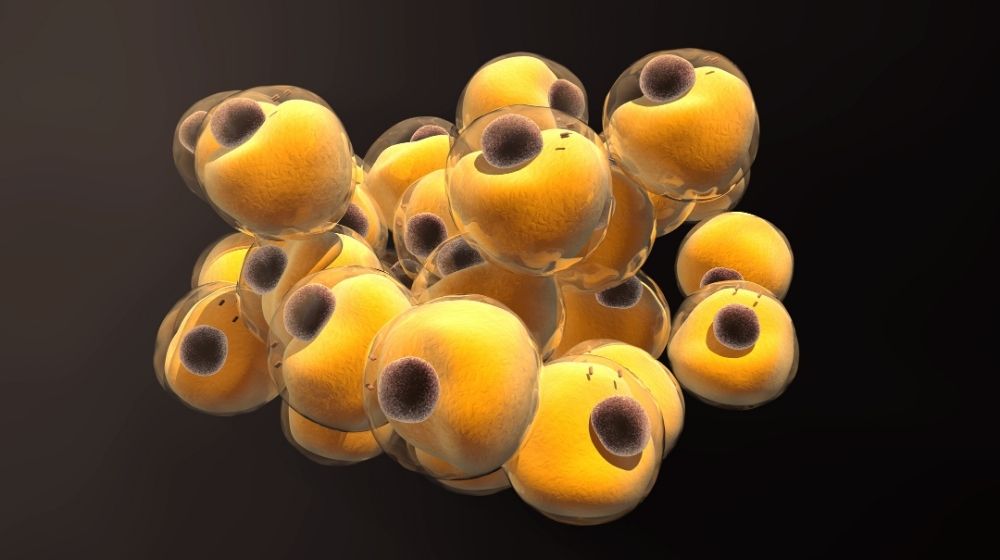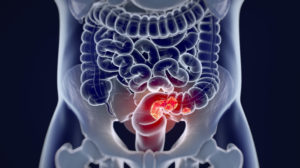Obesity is a leading medical issue in America, and biomedical scientists are still trying to understand the physiological changes due to increased fat gain. Epigenetic regulators that sense environmental cues, such as temperature, may control beige fat thermogenesis.
Recently, researchers uncovered that one of the two types of fat tissue, WAT (white fat tissue), undergoes a process called “beiging.” Similar to what we see in BAT (brown fat tissue), beiging is a darkening of the tissue color and enhances its fat-burning capacity.
Brown and beige fat tissue are sensitive to cold stimuli, causing the body to burn more fat to generate heat. A change in gene expression drives this fat-burning effect that initiates a process called thermogenesis.
Thermogenesis involves uncoupling protein 1 (UCP1). Additionally, the mitochondria of brown and beige fat tissue express it highly. Though the exact mechanisms are still unclear, a new study found epigenetics may play a role.
Read the original publication of this study here: [TET1 is a beige adipocyte-selective epigenetic suppressor of thermogenesis]
This study aimed to examine the role of epigenetic regulation of energy metabolism and look at how TET1 could be a valuable target to consider in metabolic diseases and obesity treatment.

TET1 is a beige adipocyte-selective epigenetic suppressor of thermogenesis
Researchers at UC Berkeley found an inverse correlation between thermogenesis and the expression of Tet methylcytosine dioxygenase 1 (TET1). TET1 is an enzyme that can separate methyl groups from DNA.
TET1 acts as an autonomous repressor of thermogenic genes, including Ppargc1a and Ucp1, in beige fat tissue. Additionally, researchers noted that WAT had high TET1 expression, whereas expression was low in BAT.
Cold exposure, which causes fat tissue beiging, suppressed TET1 expression in mice, leading the team to speculate that it may be negatively directing the beiging via epigenetic mechanisms.
Furthermore, they used 3T3-L1, a cell line that differentiates into fat cells, and found that TET1 expression declined as the cells became more like adipocytes. These results agree with their findings in mice.
Next, the team used RNA silencing to block TET1 expression in lab-grown beige fat cells. To study the thermogenic activation response, researchers used forskolin, a molecule that activates UCP1.
After forskolin treatment, loss of TET1 raised the thermogenic response of these cells. Some genes showed greater sensitivity, including Cidea, Elovl3, Ppargc1a, and Ucp1. Notably, while testing TET2 and TET3 enzyme loss by RNA silencing, researchers didn’t observe the same effect. In other words, TET1 is unique in its inhibitory effect on thermogenesis.
In a related experiment, the team increased TET1 rather than silence it. After inducing thermogenesis, researchers found an opposite impact on thermogenic genes.
The team was also curious about the role of TET1 in cold tolerance. Compared to controls, mice lacking TET1 only in fat tissue had higher body temperature and respiration after exposure to cold. Additionally, they concluded the loss of TET1 enhanced fat tissue beiging.
subcutaneous adipose expression of the DNA demethylase TET1 is suppressed by cold and other stimulators of beige adipocyte thermogenesis. TET1 acts as an autonomous repressor of key thermogenic genes, including Ucp1 and Ppargc1a, in beige adipocytes.
Adipose-selective Tet1 knockout mice generated by using Fabp4-Cre improves cold tolerance, increases energy expenditure, and protects against diet-induced obesity and insulin resistance. Moreover, the suppressive role of TET1 in the thermogenic gene regulation of beige adipocytes is largely DNA demethylase-independent. Instead, TET1 coordinates with HDAC1 to mediate the epigenetic changes to suppress thermogenic gene transcription. Taken together, TET1 is a potent beige-selective epigenetic breaker of the thermogenic gene program. Our findings may lead to a therapeutic strategy to increase energy expenditure in obesity and related metabolic disorders.
To uncover the mechanisms behind this process, the team transfected cells with distinct mutations of TET1 with loss of regular function. Surprisingly, they found that the effect didn’t require DNA demethylase activity. Instead, the mechanism was more elaborate. It involved TET1 joining with another epigenetic regulator, histone deacetylase-1 (HDAC-1). The enzyme complex adhered to the promoter region of UCP1, blocking its expression.
While brown and beige fat cells share many features in function and morphology, discrete properties have been identified, including the plasticity of beige thermogenesis. Researchers identified TET1 as a beige fat-selective epigenetic repressor of the thermogenic gene program. TET1 cooperates with HDAC1 to repress some of the thermogenic genes like Ucp and Ppargc1a. The team thinks that such interaction aids local epigenetic changes and controls other transcription factors and co-factors to regulate transcriptional activity.
Takeaways:
- Adipose-selective Tet1 knockout mice generated by using Fabp4-Cre improves cold tolerance, increases energy expenditure, and protects against diet-induced obesity and insulin resistance.
- The suppressive role of TET1 in the thermogenic gene regulation of beige adipocytes is largely DNA demethylase-independent. Instead, TET1 coordinates with HDAC1 to mediate the epigenetic changes to suppress thermogenic gene transcription.
- Taken together, TET1 is a potent beige-selective epigenetic breaker of the thermogenic gene program. Our findings may lead to a therapeutic strategy to increase energy expenditure in obesity and related metabolic disorders.
You can read the original publication of this study here: [TET1 is a beige adipocyte-selective epigenetic suppressor of thermogenesis]





